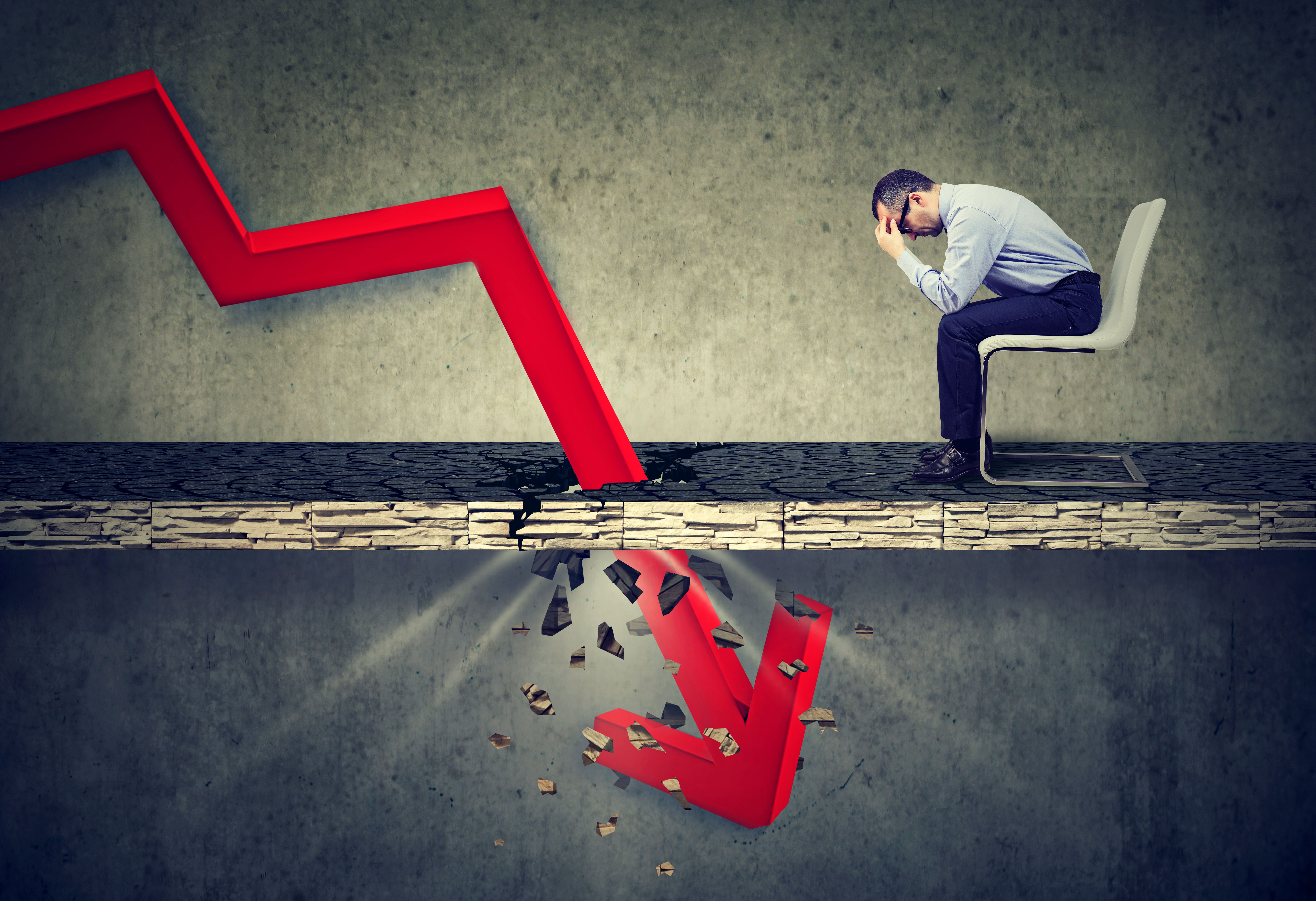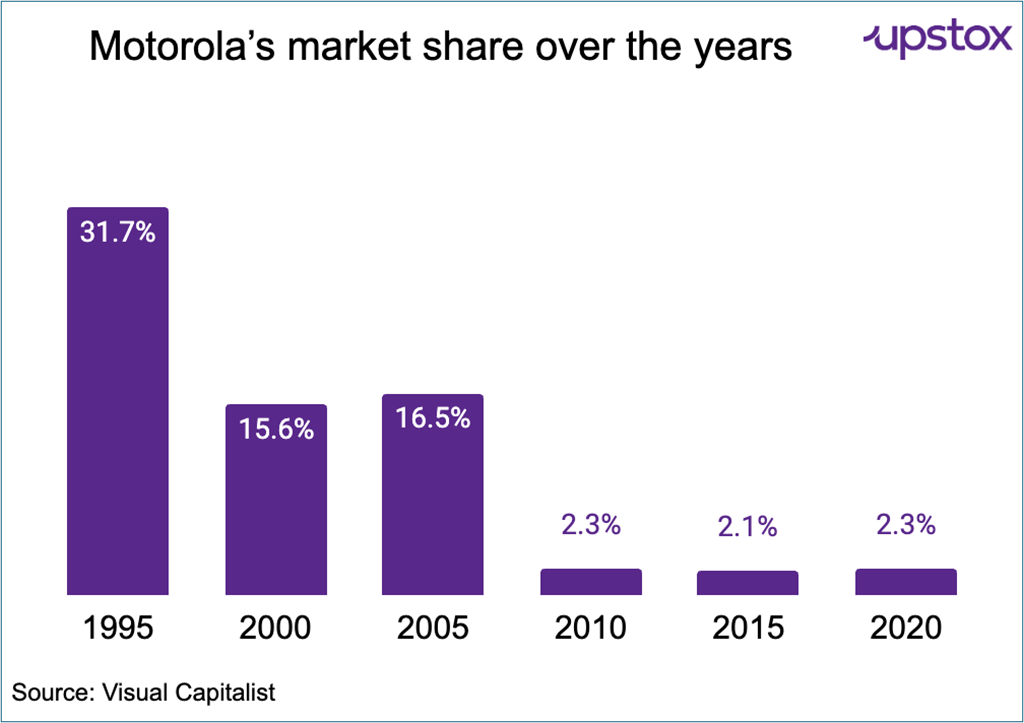Upstox Originals
When titans tumble: Learnings from the downfall of big brands
.png)
7 min read | Updated on September 26, 2024, 19:36 IST
SUMMARY
If we asked you - what do brands like Tupperware, Nokia, Kodak, Motorola, all of these have in common? They were all household names at one point, market leaders and global giants. Today, however, the times have changed and the tables have turned. Most of these are nowhere to be found. In this note, we list a few such brands, track their rise, and study the causes of their failure. Read on to find out

Businesses should adapt to evolving consumer trends and technological changes
“Change before you have to.” – Jack Welch, former CEO of General Electric.
Innovation and the ability to adapt to changing times are essential prerequisites for the success of any business—fundamental principles taught in Business 101.
That said, the inability to adapt and the failure to foresee upcoming trends has led to the failure of many businesses. Not just small ones, but ones so big that they were considered too big to fall.
We admit that in hindsight everyone of course has 20-20 vision. But that still makes these businesses interesting case studies for business leaders of tomorrow.
Examining their mistakes not only helps us avoid similar pitfalls but also instills a sense of humility, reminding us that the inability to adapt can lead to a swift and dramatic fall from the top.
Interestingly, there has been a significant change in top 5 most valuable companies over the years mainly because of technology and innovation

Source: Bloomberg, news articles
Off the table: Tupperware's fall
"Nearly everyone now knows what Tupperware is, but fewer people know where to find it," Brian Fox, Chief Restructuring Officer, Tupperware wrote in the U.S. Bankruptcy Court for the District of Delaware. A one-time favourite of household kitchens Tupperware’s recent bankruptcy has taken many by surprise but has been in the making for some time now.
What worked?
Tupperware invented airtight food containers which can save food from getting spoiled in the era when refrigerators were not popular. Apart from their unique product, the success of the company was also attributable to the unique sales channel they adopted - ‘Tupperware Parties’. It was a social gathering where women were persuaded to sell tupperware making them their direct sales agents. A kind of multi-level marketing approach.
What went wrong?
Till 2000, Tupperware was faring with performance and its products. But Tupperware was still relying on traditional and conventional methods of sales channels. Even as of 2022, 80% of its sales were from these direct channels. This, at a time when e-commerce boomed and consumer behaviour evolved.
But Tupperware failed to innovate and adapt with new technology-savvy sales channels to meet the changing demands and preferences of consumers. This was the problem and eventually became a major cause of failure. Even their direct sales agents were not finding this business lucrative anymore and hence stopped selling its products.
Tupperware gradually started to close operations in the UK, Netherlands, Israel, Ireland, New Zealand, and so on.
The pandemic brought some relief. As people started to stay at home more, the need for storage increased as well. However, relying mostly on conventional sales channels could not lift their sales much. They even tapped ecommerce and telemarketing but it was too late.
By the time other alternatives like glass containers and competitors emerged with better products, reach backed by e-commerce. The concern over plastic causing pollution and its chemicals can have a detrimental impact on the health of consumers further aggravated the concerns.
By 2023, the company had $812 million of debt, and the inability to service became a key hurdle. The debt spiral led to the company closing its US manufacturing operations.
There were also some reports of financial inconsistencies, which dimmed the prospects of a strategic buyer.
On 16th Sept-24, the company filed for Bankruptcy with $700 Mn of debt.

Kodak: From Kodak moment to faded vision
Remeber the Kodak moment? What happened to it?
What worked?
Kodak was the king of traditional cameras and film which it pioneered. Being pioneers, they were the market leaders in the business of conventional cameras.
“You press the button, we do the rest” their marketing slogan led to big popularity for their product.
Kodak was quite advanced when it came to technological advancements and adoption. After inventing conventional cameras, they invented color cameras as well.
Ironically, they were the ones who invented digital cameras in the 1970s and the same invention was one of the key reasons for their failure.
What went wrong?
Kodak thought digital cameras wouldn't pick up mainly because the internet was not common at that time. Thanks to the internet boom in 2000, digital photography took off.
Cameras evolved from digital devices to being seamlessly integrated into smartphones. Instead of printing photos, people shifted to sharing their memories instantly online.
Kodak stuck with film! Companies like Sony & Canon took the badge of digital camera market leader and dethroned Kodak. They missed the digital train, and by the time they tried to jump on, it was too late.

Nokia: Disconnected with smartphones
What worked?
Nokia made headlines in the world in the era of Dot Com Boom during the 1990s. They were the leaders of keypad mobile phones. Their innovative product of wireless phones brought revolution in the era of wired telephones. Nokia was everywhere with mobile phones, right?
Their products were termed as “The Unbreakable” even Nokia introduced one of their flagship model 3310 as an “indestructible phone”.
That was the craze of Nokia - Connecting People..!
What went wrong?
When smartphones like the iPhone and Samsung came along, Nokia got left behind. They had their own OS called Symbian, but it did not reflect consumer preference.
They underestimated how much folks would love apps and touch screens. Plus, they didn't push hard enough in the U.S., which was a massive market. When they finally tried to catch up, it was with Windows Phone, but it was too late.
Their competitors Apple and Samsung with newer technologies and better financial power entered with smartphones offering much wider features at the same price. Adapting too late to new technology trends was their downfall.

Motorola: How once a status symbol vanished?
What worked?
Motorola started the business with radio and finally got into keypad phones in the late 1990s. You must be wondering what they did differently from Nokia? Nokia was the product for the masses and economical while Motorola was a premium product with better features and technologies.
Their flagship product RAZR was even the status symbol of the era.
What went wrong?
Motorola was late to transition from 2G to 3G technology. While competitors like Nokia, and later, Apple and Samsung, were quickly adapting to the new 3G networks and the smartphone era.
Overemphasis on Single Products: The success of the Razr made Motorola complacent. They focused heavily on this one model and its derivatives rather than innovating across the board or preparing for the next big shift in technology. This left them vulnerable when consumer preferences changed.
Leadership at Motorola made several questionable decisions, like not investing in developing a competitive smartphone ecosystem early enough. Further downfall was aggravated by financial mismanagement and lack of focus on emerging markets and trends.

Conclusion
While there are different specifics that hurt these businesses, the root causes are the same
- A failure to adapt to trends and technologies
- Overconfidence in own’s ability
- A failure to anticipate consumer preferences and change according to them.
Today consumer habits and technologies are changing at a fast pace. This pace will only get accelerated with AI. “Disruption” is the name of the game.
Hence it becomes important to keep innovating and stay ahead of the curve.
As Winston Churchill put it, “Those that fail to learn from history are doomed to repeat it.”
By signing up you agree to Upstox’s Terms & Conditions
About The Author
Next Story
